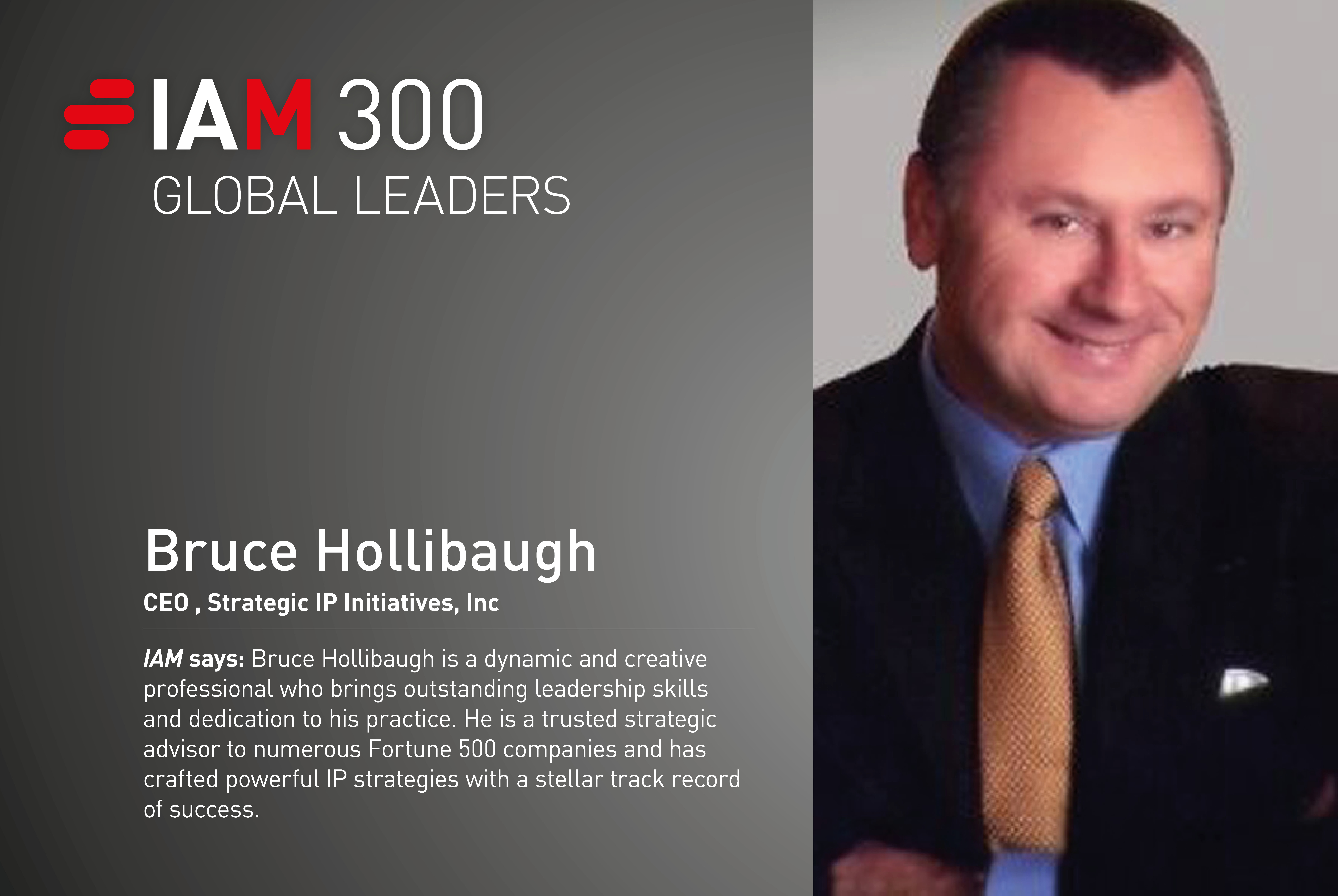Bruce Hollibaugh
As CEO, what does inspiring leadership look like to you?
To me, inspiring leadership has always represented conscientious and considerate empowerment. Empowering our team only works if they have the training and resources to execute. We operate in a pressured environment. The challenge is taking enough time with each team member to gauge their inherent strengths and identify the areas that need additional support.
You have won acclaim for having developed a technical research strategy for multiple Fortune 100 patent prosecution teams. What makes your approach stand out in the market?
Our success is based on several key factors. First is seamless integration – Fortune 100 clients have large external and internal teams with an established IP information flow that we must be mindful of to smoothly integrate and provide the maximum ROI possible. Second, our goal is to generate actional data for the patent prosecution process, but our research is often valuable for the client’s entire IP team. We work with the licensing and litigation team to share that information when appropriate. Each member of our team has the licensing and litigation experience required to understand how to get our clients the most impactful data to facilitate the most impactful claims. Finally, there is no substitution for putting talented and experienced engineers' eyes on competitive teachings and products. We use software tools to aid efficiency, but algorithms will not obtain the highly complex and often subtle interconnected data that the team needs to maximise its potential.
Can you tell us about your company’s internal approach to trade secrets, and what this looks like in terms of education and employee retention?
Trade secrets are some of the most sensitive information that a corporation handles. We are fortunate to have access to some of the top internet security talent in the industry. Having subject-matter experts doing work for the Department of Defence has given us great insight into how best to handle sensitive data. We use NIST-certified solutions with the audit capabilities that our clients expect. We have developed internal client information handling protocols that all of our team members must adhere to and we train new team members to ensure that they can comply with our policies. We can also integrate our security solutions with our client's bespoke solutions. Multi-factor identification is used throughout.
The development of your lab in Silicon Valley was “driven by your clients”. Can you tell us a little about how this works day to day and how it has differentiated your firm from its competitors?
I am unaware of any direct competitor with a dedicated lab that exists solely to support external subject-matter expert research. The genesis of the lab came about a few years ago when one of our clients requested mobile phone testing that required test equipment that, at the time, only wireless certification facilities had ready access to. Those test facilities were – understandably – unwilling to do the type of testing that we required on mobile phones that may have been produced by their most prominent clients.
Another unique differentiator is that we have built our Silicon Valley facility to have 24/7 capabilities for our subject-matter experts. Every piece of test equipment that we use has remote control and viewing capabilities, providing them with unprecedented productivity.
Each test bench includes real-time camera monitoring so the expert – or our client – can visually see what is happening to the device. Our secure VPN enclave hosts the video and test equipment output. This is very powerful because, for example, the expert may see something occurring before, during or after the test is completed that contains critical information that would not have been readily apparent by a non-subject-matter expert equipment operator.
If you could make one change to the prosecution process in the United States, what would it be, and do you think it is likely to happen?
Beyond the continual challenges posed by the interpretation of Section 101, one of the biggest challenges that I see with regard to the prosecution process is the amount of time that USPTO examiners are given to process each application. This is a monumental task with a marginal amount of time allotted.
Bruce Hollibaugh
Bruce Hollibaugh is CEO of Strategic IP Initiatives, based in Silicon Valley, which provides patent analysis, patent prosecution technical support, product analysis, IP asset transactions and claim-chart generation using the top engineering and licensing talent from around the globe. Mr Hollibaugh’s specialties include IP strategy development, building and empowering teams, preparing and negotiating agreements, reverse engineering, patent evaluation, strategic prosecution, technology licensing and IP asset transactions.
